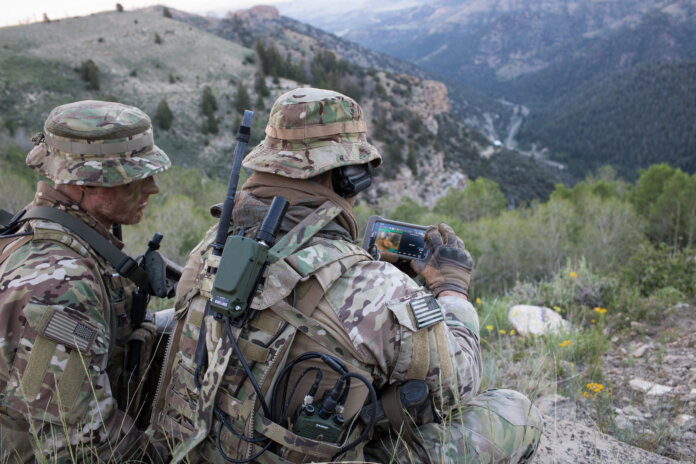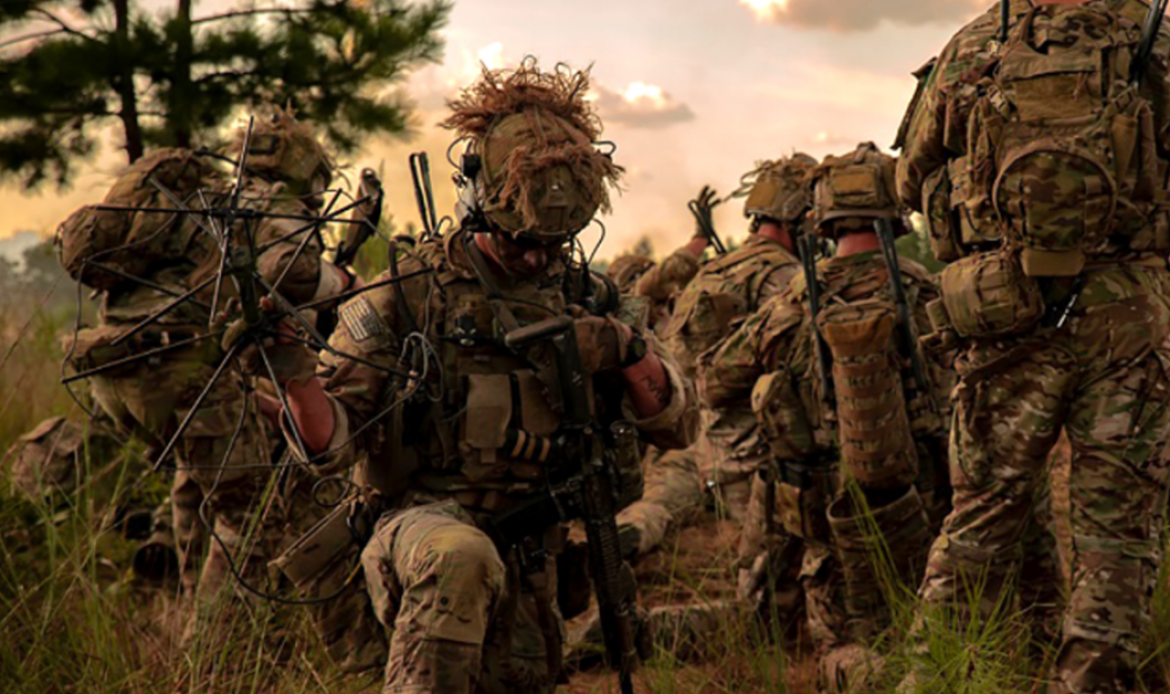
New tactical radios will soon be equipping the British Army and other UK forces replacing some of the radios in the Bowman tactical communications architecture.
In late November the UK Ministry of Defence (MOD) announced a contract worth $109.4 million for new radios to equip the British Army contracting L3Harris to provide 1,300 MMRs (Multimode Radios). The MOD press release announcing the news said these will be used by mounted and dismounted troops. The first radios will be delivered by the end of 2022, the press release continued, the balance by the end of 2023.
Waveforms
Ian Blower, L3Harris’ UK regional managing director told Armada that two radios fulfil this contract, chiefly the company’s AN/PRC-163 and AN/PRC-167.
The AN/PRC-163 is a two-channel handheld radio covering frequencies of 30 megahertz/MHz to 2.6 gigahertz/GHz. Channel 1 carries standard Very/Ultra High Frequency (V/UHF: 30MHz to three gigahertz) Line-of-Sight (LOS) communications.
Waveforms carried on this channel include L3Harris’ proprietary Advanced Networking Wideband Waveform-2 (ANW-2). The channel hosts the Single Channel Ground and Airborne Radio System (SINCGARS) ground-to-ground and ground-to-air/air-to-ground waveforms. The P25 waveform mainly used by the United States first responder community is also carried on Channel 1. Optional waveforms for Channel 1 include the North Atlantic Treaty Organisation’s SATURN (Second Generational Anti-Jam Tactical UHF Radio for NATO) waveform. Other options include the HPW (High Performance Waveform) for Satellite Communications (SATCOM).
Installation of the HAVEQUICK-I/II waveform for air-to-ground/ground-to-air communications is also possible. The company’s official literature says the AN/PRC-163’s growth potential includes the Mobile Objective User System (MUOS) SATCOM waveform. Channel 2 also carries ANW2 along with UHF LOS and UHF SATCOM. Optional waveforms include TrellisWare’s TSM-X waveform for Mobile Ad-Hoc Networking (MANET). Inmarsat’s L-band (1.3GHz to 1.7GHz) Tactical Satellite (L-TAC) waveform is also optional. Meanwhile, customers can integrate L3Harris’ Wraith wideband MANET waveform if they wish.
Like the AN/PRC-163 the AN/PRC-167 is a multichannel radio although in backpack form. L3Harris’ official literature says this radio covers similar wavebands to the former. It carries a variety of waveforms including SINCGARS, HAVEQUICK-I/II, SATURN, P25, TSM-X, HPW, L-TAC and has MUOS growth potential. These radios are procured off-the-shelf with “some minor modifications to the user interface requested by the UK MOD that L3Harris will introduce into the standard products,” Mr. Blower continued.
Both radios will be used by the Royal Navy, British Army and Royal Air Force (RAF). It is likely they will equip the Royal Marines and RAF Regiment. Both these latter forces provide land warfare components to the Royal Navy and RAF respectively and to joint UK forces. Mr. Blower says the radios will be used for ground-to-air communications and tactical SATCOM. “As the radios are deployed and used, it is likely their flexibility and adaptability, and ability to offer resilient communications will meet other needs leading to much wider usage.” It is unclear exactly which radios the MMRs will replace although it is most likely to be some of the transceivers deployed with the UK’s Bowman tactical communications architecture. Bowman backpack radios include the UK/PRC-355 five-watt/W system and UK/PRC-356 16W systems.
Morpheus
As Armada has profiled in the past, the MOD is in the midst of the Project Morpheus overarching modernisation of British military communications. Mr. Blower says the MMRs “have not been procured as part of the Morpheus (programme).” Nonetheless he says both radios can integrate into the Bowman and future Morpheus architectures. Moreover, “once in the hands of the users, it is likely that many lessons will be learned that should have a positive influence on future (radio) procurements.”

by Dr. Thomas Withington













